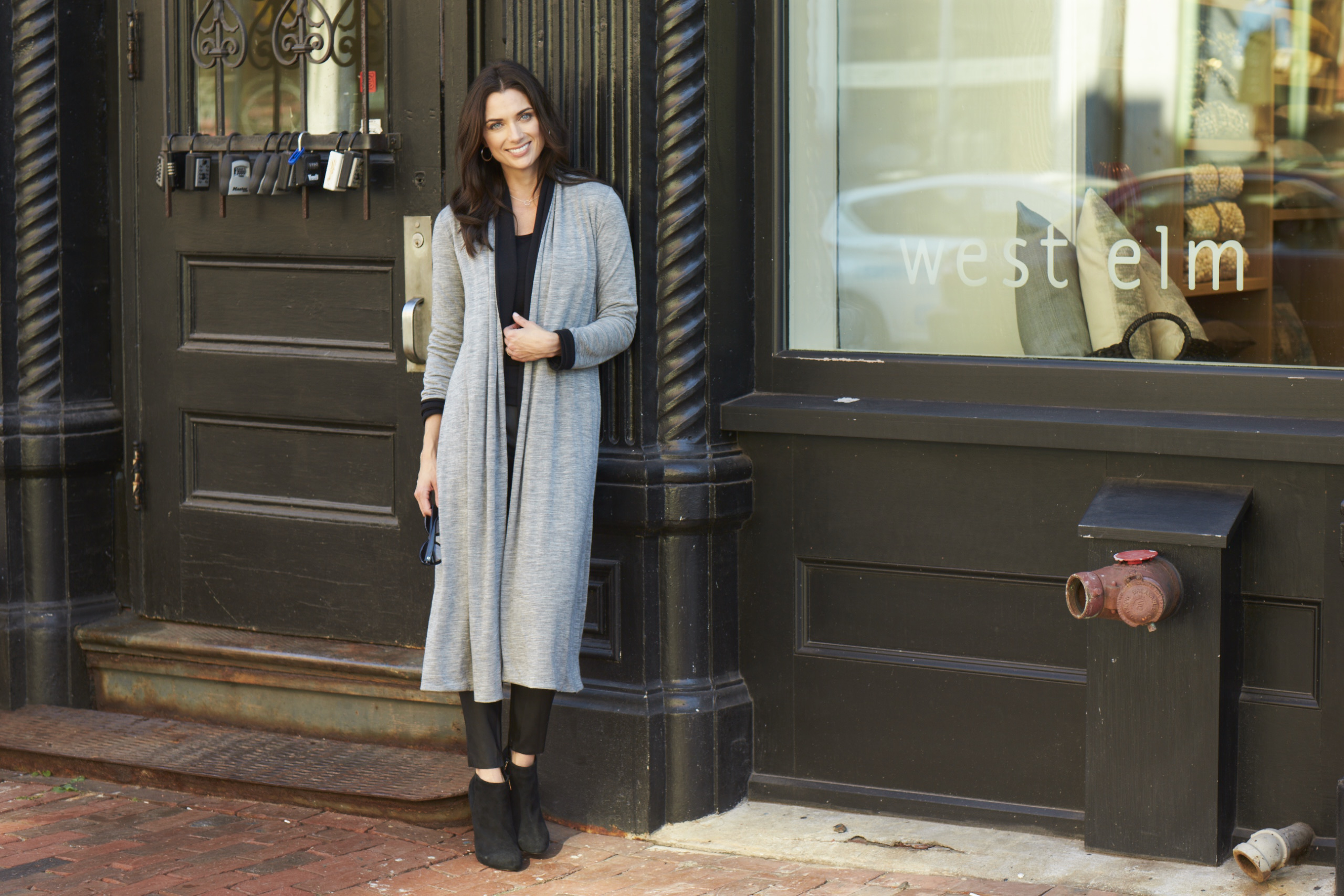
Fashion designers are incredibly diverse in background, technique, and creativity but one thing many share in common is a first choice in fiber: Wool.
This shouldn’t come as too much of a surprise when you consider that wool is famously familiar the world over. Historically speaking, we know wool has been used to make clothing since approximately 400 BC. Since then it’s made its way onto every continent, climate, and culture. This natural and incredibly versatile fiber’s fame means any designer doing research or seeking inspiration from any culture or time period will certainly find their way to wool.
What has historically drawn designers to wool still does. According to Eliza Chappell, Designer and Director of Retail at Rambler’s Way in Kennebunk, Maine, wool is the perfect starting point for almost anything a fashion designer can imagine.
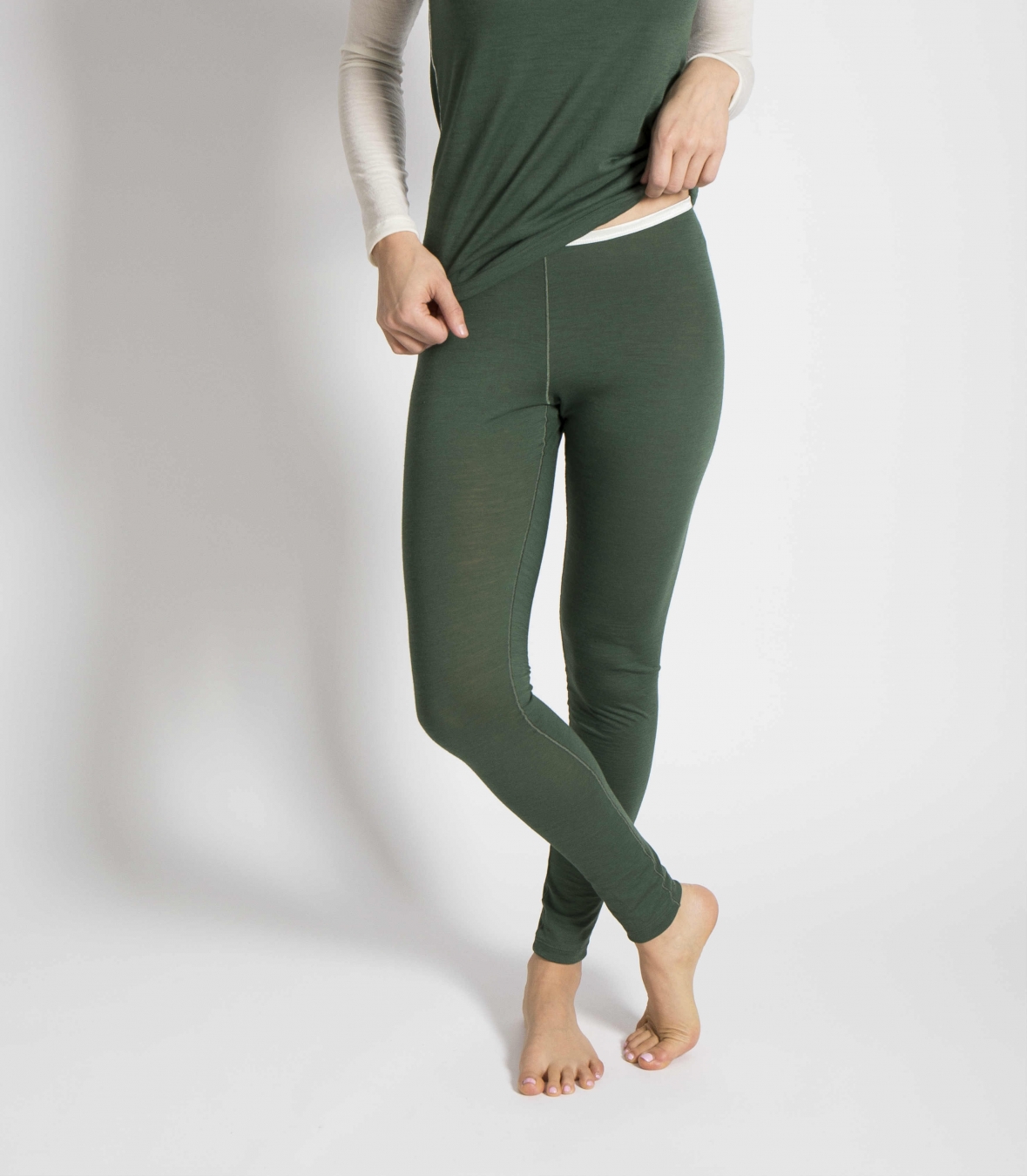
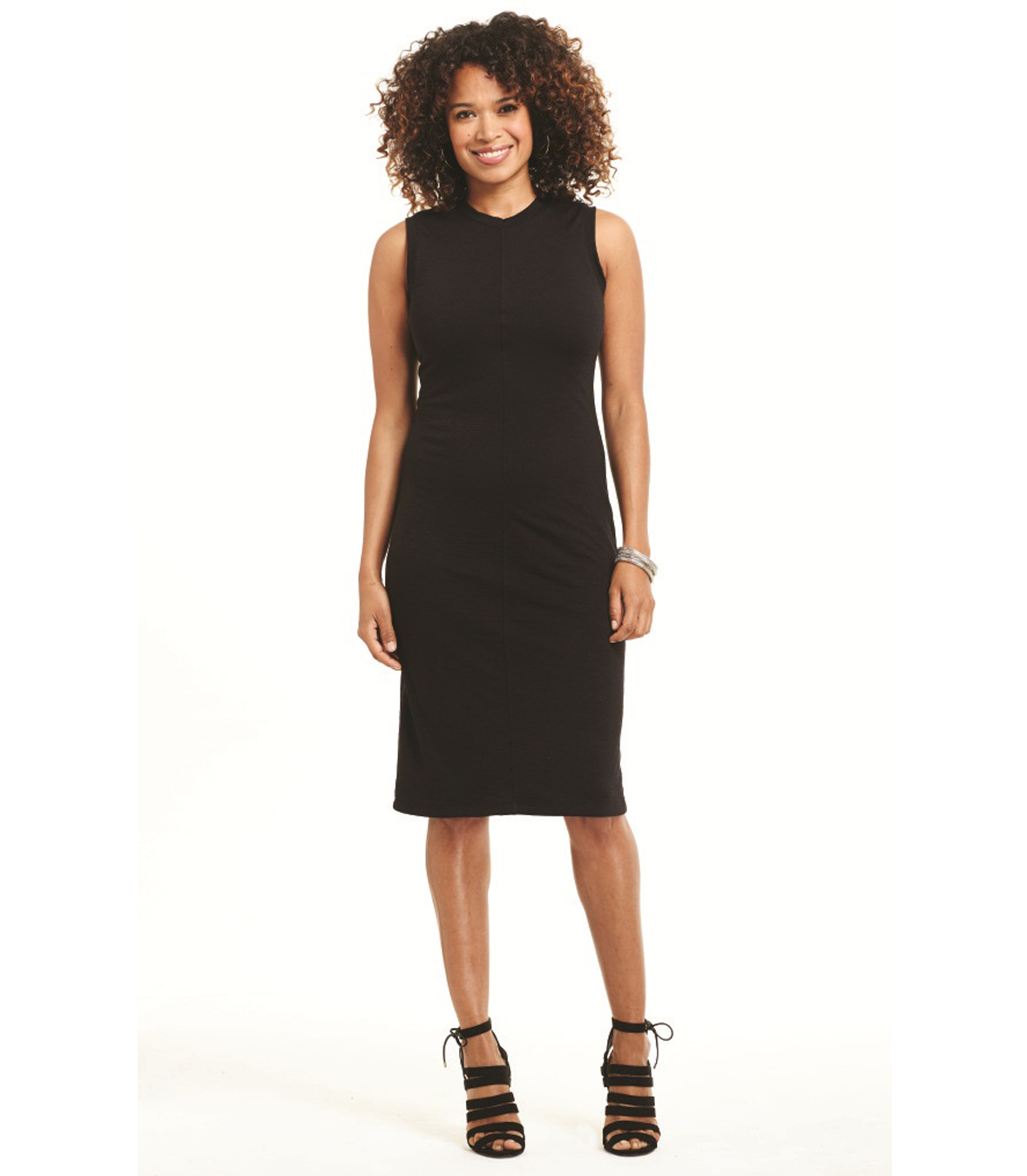
“From day one I just fell in love with all the apparel design opportunities that wool presented from sundresses and tees, to leggings, to richly colored sports jackets and skirts. From a design perspective, there is no end to what wool will allow you to do.” And when compared with manmade fabrics, wool’s ability to breathe sets it apart as well. “Beyond looking good in wool,” says Eliza, “you feel good too.”
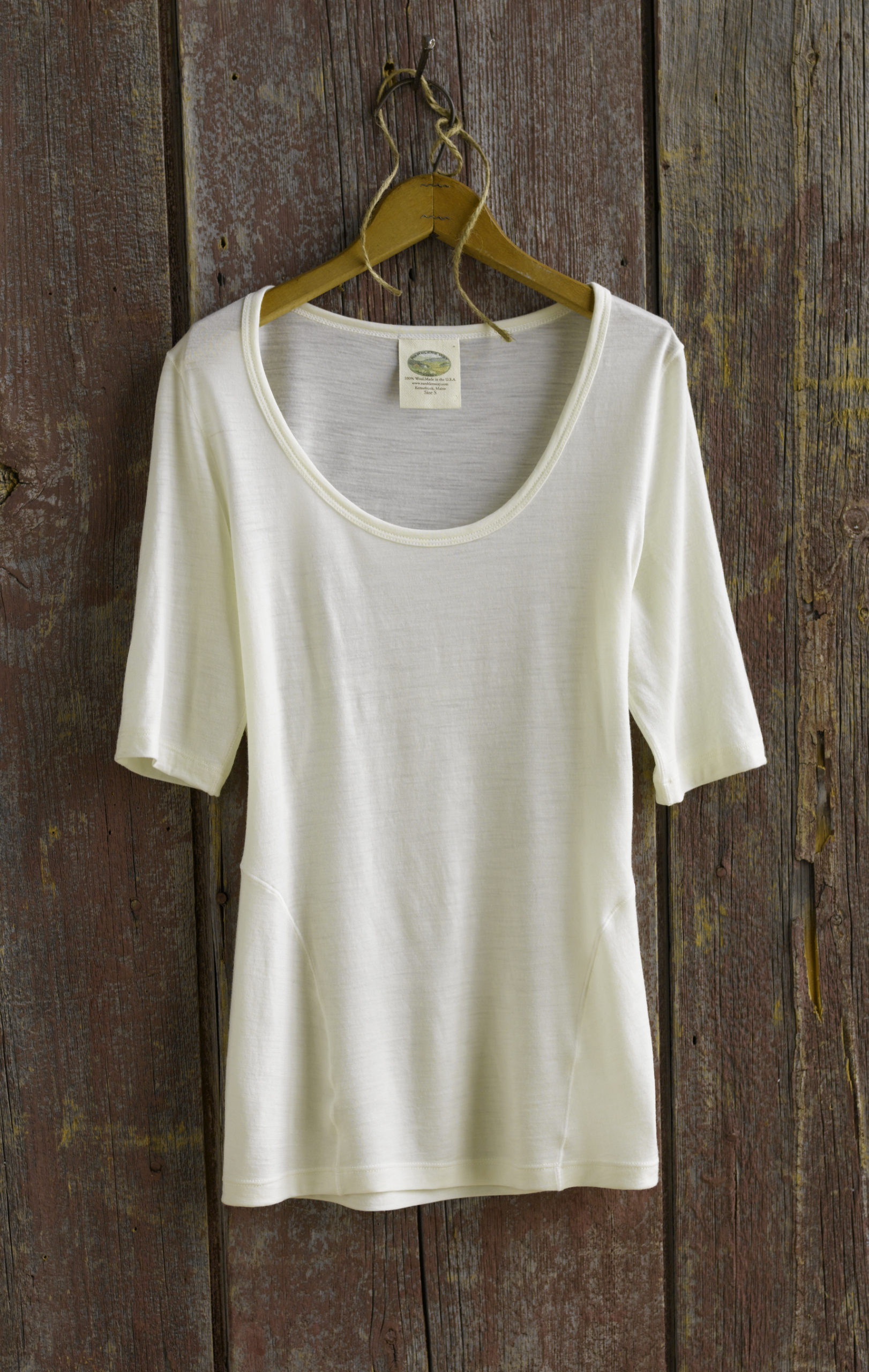
The why of wool is best understood by looking closely at the advantages of the fiber itself. Wool is a top choice for blazers because polyester will develop wear spots — but beyond simply the practicalities of choosing wool, the distinct structure of the wool fiber gives designers four unique benefits. Fit, drape, and color, which have been keystones of fashion since its inception, and sustainability, a giant awakened, that demands new thinking in how designers source, treat, create, and even package their designs.
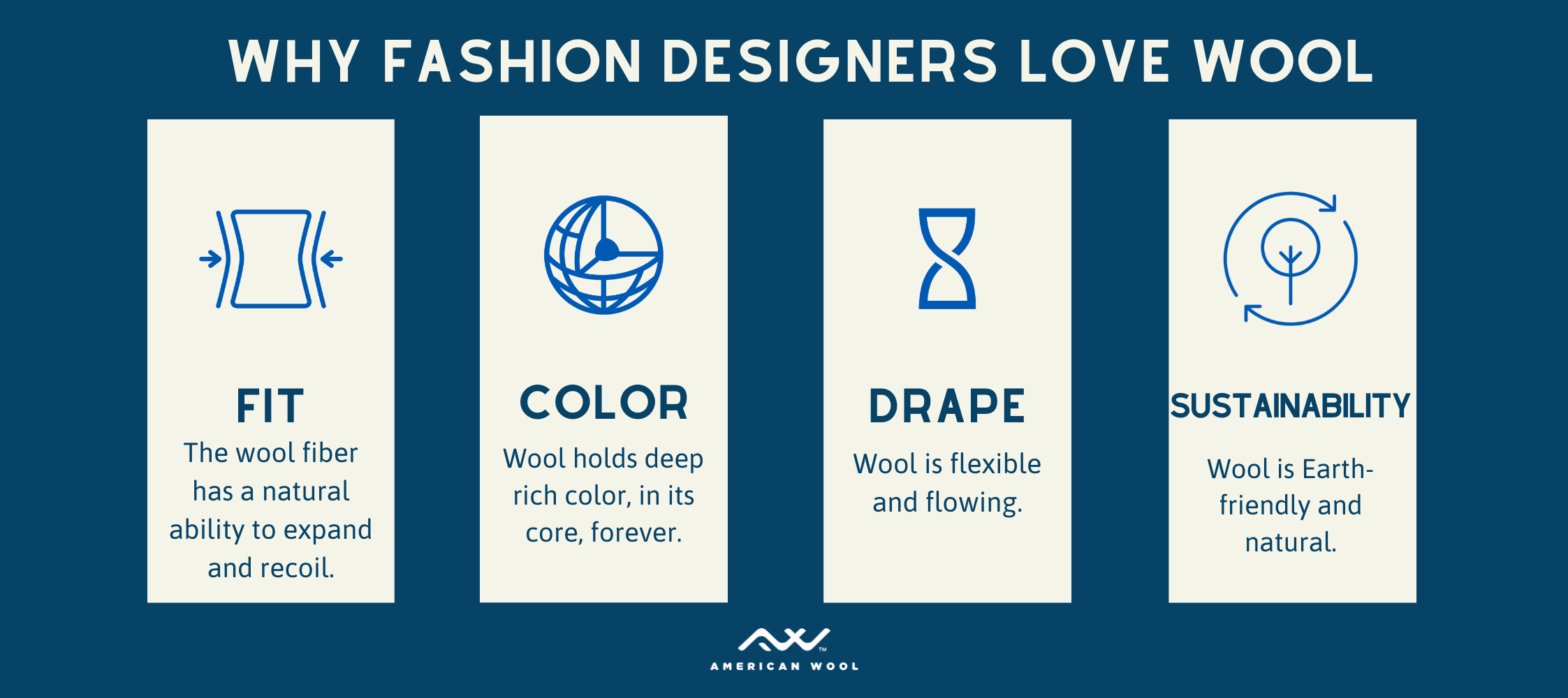
Fit: The wool fiber has a natural ability to expand and recoil.
When it comes to fit, in say a classic pencil skirt or little black dress nothing hugs the body more effectively or moves with it, the way wool can.
Drape: Wool is flexible and flowing
Wool‘s ability to stretch also translates into a beautiful drape. “Our lightweight wool is truly an amazing fabric.” says Chappell, “we make summer dresses out of our 4 oz. jersey wool and they simply flow and move beautifully with you. And nothing is more comfortable on a sunny 80-degree day.” Simply put, wool can hold a pleat or a gather with ease, something that would be a challenge for a garment made from a synthetic fabric.
Color: Wool holds deep rich color, in its core, forever.
Other fibers accept dyes in their outer layers, but wool fibers accept dye into their core. Meaning designers working on anything from fine men’s suits to ultra-hipster socks can look to wool for deep, dark, and luxurious colors that will never fade from their intended look. Chappell, doesn’t hesitate on the topic of color. “Nothing comes close to wool she says, the rich colors add to the luxury, style and long term value of all our wool products.”
Sustainability: Wool is earth-friendly and natural.
Designers are recognizing that today’s retail consumers are thinking more ethically than ever before. There is accumulating evidence that consumers are impacted by the perceived sustainability of a brand, and further, that consumers are willing to pay a premium for products from a sustainable brand over a non-sustainable competitor brand.
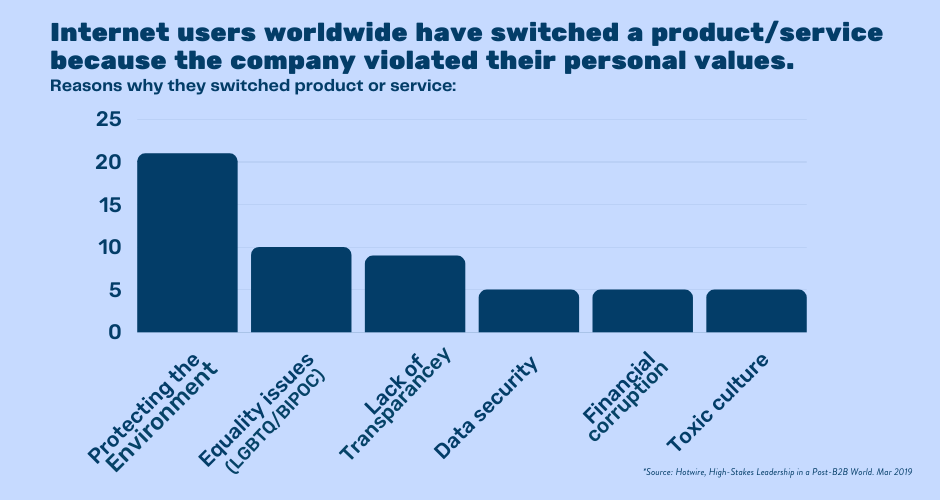
A 2019 survey led by Hotwire found that 47% of internet users worldwide had ditched products and services from a brand that violated their personal values.
Protecting the environment topped that list.
Chappell and her team at Rambler’s Way support the concept of slow fashion. A focus on enduring style, and the long-term value of a garment. At the opposite end of the spectrum, brands from companies like Target and H&M have been accused of driving fast fashion, the process of creating poorly made, impulse-buy clothing that is intended to be near disposable.
Until now Chappell’s voice and demeanor have been pleasant and inspired but there is a clear change in her voice as she talks about what many claim to be the dark side if the fashion world. “Designing only around the latest and greatest trend is wasteful. I don’t like how cyclical fast fashion is. That part of the apparel industry is focused on low margin high profit. They don’t worry about fair wages, safe working conditions, or polluting our planet. That’s just not for us. We value being resourceful, trying to source and produce locally, and contributing to the value of our community.”
As she finishes her thought, her naturally upbeat tone returns. “Times are changing. As talented and diverse new designers make their break into this business, I think they’ll be eager to use natural and sustainable materials. Wool is both old and forever, and every season I’m excited to see what our fashion designers, and the entire fashion industry, will do with it.”
